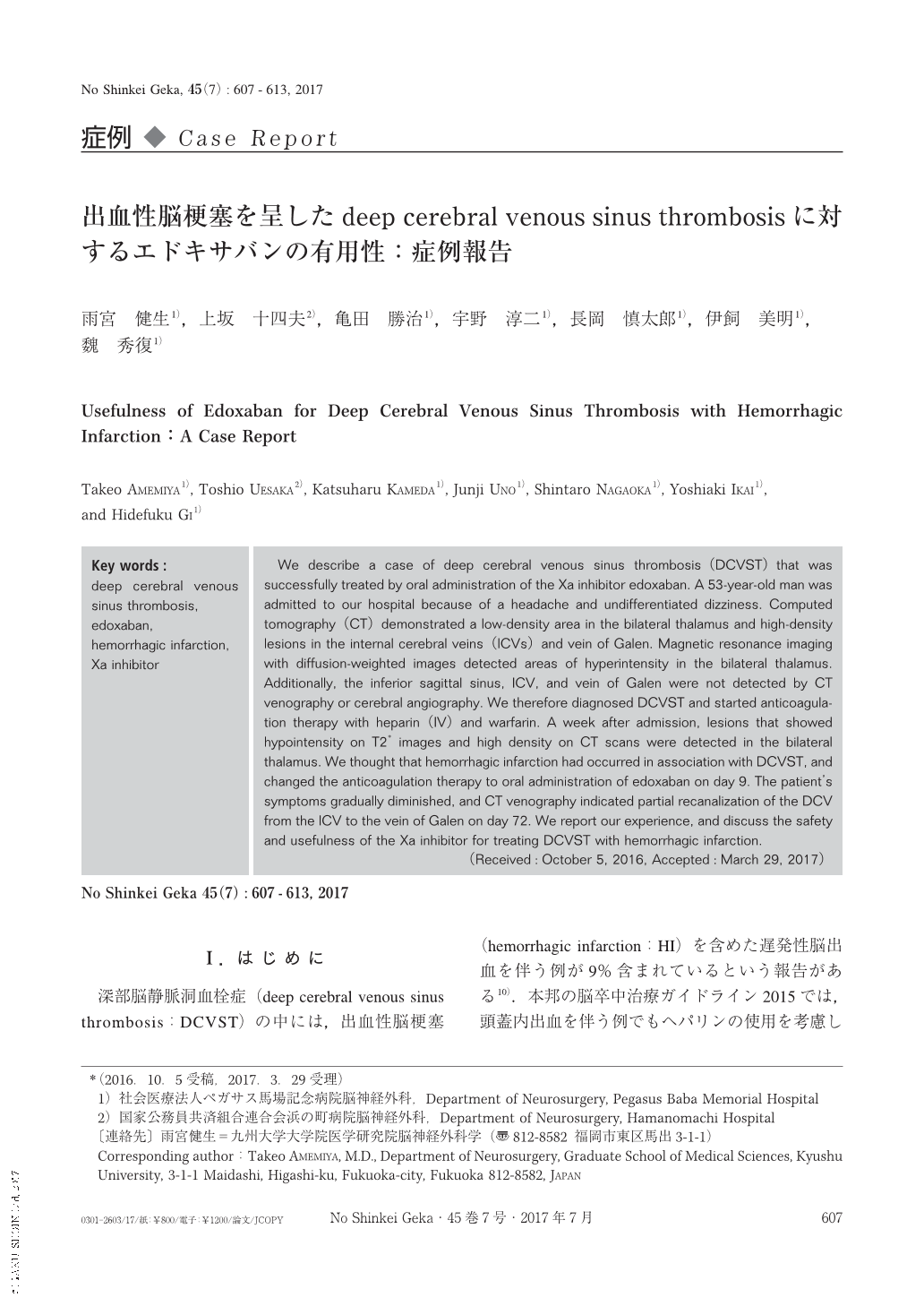Japanese
English
- 有料閲覧
- Abstract 文献概要
- 1ページ目 Look Inside
- 参考文献 Reference
Ⅰ.はじめに
深部脳静脈洞血栓症(deep cerebral venous sinus thrombosis:DCVST)の中には,出血性脳梗塞(hemorrhagic infarction:HI)を含めた遅発性脳出血を伴う例が9%含まれているという報告がある10).本邦の脳卒中治療ガイドライン2015では,頭蓋内出血を伴う例でもヘパリンの使用を考慮してもよいとされている8).しかし,そのような症例でヘパリンの使用を継続することで出血の拡大や死亡率の上昇を来す恐れがあることは否定できない.今回われわれは,ヘパリン,ワルファリンを用いた抗凝固療法中に遅発性にHIを合併した症例に対し,エドキサバンに変更することで症状の増悪や出血の拡大なくDCVSTの部分再開通を認めた症例を経験したので,文献的考察を加え報告する.
We describe a case of deep cerebral venous sinus thrombosis(DCVST)that was successfully treated by oral administration of the Ⅹa inhibitor edoxaban. A 53-year-old man was admitted to our hospital because of a headache and undifferentiated dizziness. Computed tomography(CT)demonstrated a low-density area in the bilateral thalamus and high-density lesions in the internal cerebral veins(ICVs)and vein of Galen. Magnetic resonance imaging with diffusion-weighted images detected areas of hyperintensity in the bilateral thalamus. Additionally, the inferior sagittal sinus, ICV, and vein of Galen were not detected by CT venography or cerebral angiography. We therefore diagnosed DCVST and started anticoagulation therapy with heparin(Ⅳ)and warfarin. A week after admission, lesions that showed hypointensity on T2* images and high density on CT scans were detected in the bilateral thalamus. We thought that hemorrhagic infarction had occurred in association with DCVST, and changed the anticoagulation therapy to oral administration of edoxaban on day 9. The patient's symptoms gradually diminished, and CT venography indicated partial recanalization of the DCV from the ICV to the vein of Galen on day 72. We report our experience, and discuss the safety and usefulness of the Ⅹa inhibitor for treating DCVST with hemorrhagic infarction.

Copyright © 2017, Igaku-Shoin Ltd. All rights reserved.


